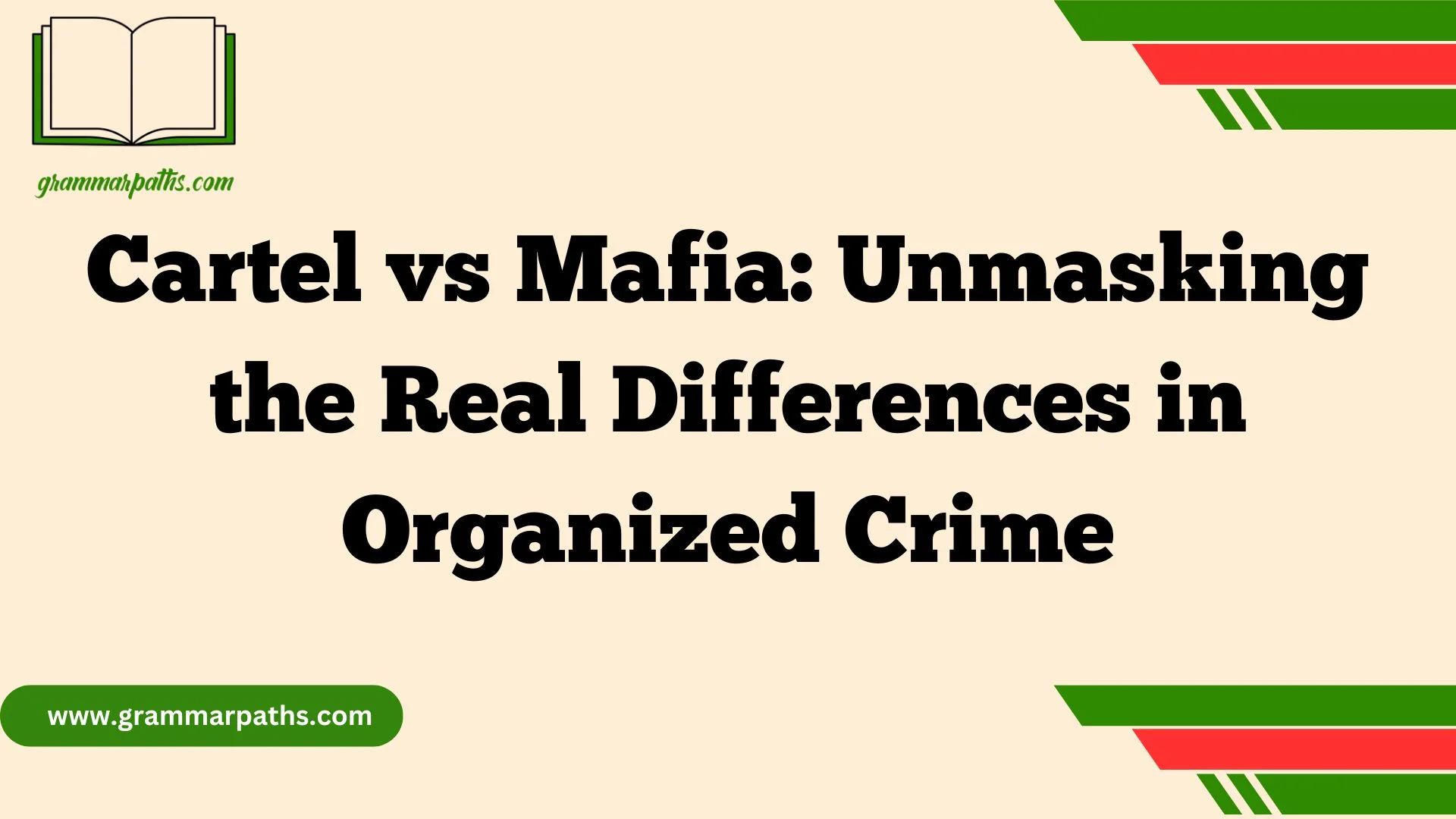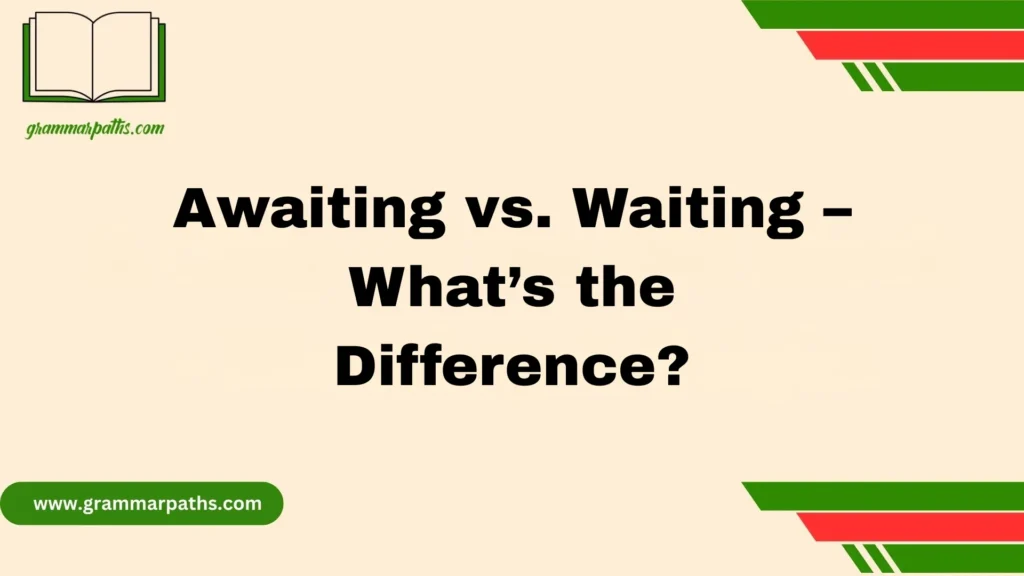The ongoing debate of Cartel vs Mafia continues to intrigue those studying organized crime syndicates. While both are criminal organizations, they differ greatly in structure, methods, and influence. The mafia is known for its hierarchical, family-based structure, using corruption and territorial control to dominate regions. In contrast, cartels operate like business empires, focusing heavily on drug trafficking and violent disputes to maintain power.
Understanding the differences between cartel and mafia is vital for law enforcement, policymakers, and those analyzing the global underworld. Cartels often work across borders, making them harder to dismantle. Meanwhile, the mafia tends to embed itself deeply in local communities. Grasping how these global crime networks function helps build tailored strategies to combat their spread and impact on society.
Why the Cartel vs Mafia Comparison Actually Matters
Most people use these terms interchangeably, but confusing them can lead to misunderstandings about global security, politics, and law enforcement. While both operate in the shadows, their methods, goals, and even their “cultures” are different.
Understanding these distinctions helps:
- Governments craft better policies
- Media portrayals become more accurate
- Readers grasp the real power dynamics shaping international crime
What Is a Mafia? What Is a Cartel?
Let’s define the terms based on criminology and real-world usage.
Mafia: A Brotherhood of Crime
The word Mafia originates from 19th-century Sicily, derived from “mafiusu,” meaning bold or swaggering. It refers to a tightly knit criminal society that blends family loyalty, tradition, and business acumen to run illegal enterprises.
Key Traits:
- Hierarchical structure
- Code of silence (Omertà)
- Focus on protection rackets, gambling, and extortion
- Long-term relationships with local politicians and businesses
Cartel: A Criminal Corporation
The term cartel in economics refers to a group that fixes prices or limits competition. In criminal circles, cartels are large, business-like criminal organizations, mostly rooted in Latin America, dealing heavily in drug trafficking, arms trade, and human smuggling.
Key Traits:
- Often decentralized networks
- Use of extreme violence
- Diversified criminal portfolio
- High infiltration of law enforcement and politics
Historical Roots of Mafia and Cartels
Understanding how these groups came to power explains a lot about their structure and operations today.
The Mafia’s Sicilian Legacy
The Mafia arose in mid-1800s Sicily, during a time of political instability. Originally seen as private protectors of landowners, they quickly evolved into a parallel power structure. By the 20th century, La Cosa Nostra (The American Mafia) was thriving in the U.S., thanks to bootlegging, unions, and political manipulation.
“The Mafia is not a gang. It’s a way of thinking, a power system embedded in society.” – Roberto Saviano, author of Gomorrah
The Birth of Cartels
Latin American cartels emerged in the 1970s, driven by surging demand for narcotics in the U.S. Colombian groups like the Medellín and Cali Cartels pioneered mass drug smuggling, while Mexican cartels took over the logistics.
Milestone Moments:
- 1980s: Pablo Escobar makes the Medellín Cartel a billion-dollar empire
- 1990s: Sinaloa Cartel becomes dominant as Colombia fractures
- 2000s: Cartels diversify into oil theft, avocado markets, and human smuggling
Organizational Structures: Hierarchy vs Networks
Despite both being criminal organizations, their internal structures are very different.
Mafia Hierarchy: A Family-Like Pyramid
The Mafia runs like a corporate family. Here’s a simplified structure:
| Rank | Role & Responsibility |
| Boss (Don) | Final decision-maker, collects profits |
| Underboss | Oversees daily operations |
| Consigliere | Advisor and conflict resolver |
| Caporegimes | Manage crews and handle specific territories |
| Soldiers | Carry out orders, collect payments |
| Associates | Non-initiated members involved in operations |
Cartel Networks: Decentralized and Ruthless
Cartels are more fluid, with factions, alliances, and brutal power shifts.
Common Elements:
- Plazas (territories): Controlled by lieutenants or subcontracted gangs
- Security wings: Sicarios (hitmen), often ex-military or teenagers
- Logistics divisions: Handle transport, corruption, laundering
- Front businesses: Mining, agriculture, and even real estate
Business Models: Crime as Enterprise
Both cartels and mafias operate like multinational corporations—but they make their profits differently.
Mafia Business Model
- Protection rackets
- Loan sharking
- Illegal gambling
- Union corruption
- Construction and trucking fraud
They focus on steady, long-term control over geographic areas.
Cartel Business Model
- Drug trafficking (cocaine, fentanyl, meth)
- Fuel theft (especially in Mexico)
- Illegal logging and mining
- Human trafficking
- Cybercrime and cryptocurrency laundering
Cartels prioritize volume, expansion, and violence.
Violence and Enforcement Styles
Mafia’s Strategy
The Mafia operates with calculated precision. Killings are sanctioned and often hidden. They avoid unnecessary attention.
“Blood makes noise, and noise brings the Feds.” – Old Mafia saying
Cartel Brutality
Cartels use violence as public terror and propaganda. Videos of executions, mass graves, and dismemberments are deliberate tools of control.
- Los Zetas pioneered military-style executions
- CJNG (Jalisco Cartel) uses drones and RPGs against rivals
- Cartel propaganda often includes branded uniforms and banners
Political Corruption and Infiltration
| Group | Notable Infiltration Examples |
| Mafia | New York unions, Italian Parliament, U.S. construction firms |
| Cartels | Mexican police forces, Honduran politics, Guatemalan courts |
Cartels tend to completely overtake local governance in rural areas, while mafias use subtle control over urban or institutional centers.
Media Portrayals: Fiction vs Reality
The Mafia Mystique
From The Godfather to The Sopranos, Mafia stories have been glamorized.
Cultural impact:
- Seen as honorable villains
- Code-driven and “respectable”
- Misrepresents the scale of violence and corruption
Cartels in Modern Media
Series like Narcos and El Chapo give a grittier, more realistic view—though still dramatized.
Themes:
- Bloodshed, betrayals, and blurred morality
- Emphasis on chaos, not code
- Focus on poverty, politics, and systemic failure
Present-Day Global Operations
Modern Mafia
- ‘Ndrangheta: Controls 80% of Europe’s cocaine trade
- Camorra: Operates in Naples, infamous for arms and waste trafficking
- Cosa Nostra: Weakened in the U.S., but still active in New York and Chicago
Cartel Expansion
- Sinaloa Cartel: Present in over 50 countries, using ports and trucking routes
- CJNG: Mexico’s fastest-growing cartel, investing in crypto laundering
- Cartel del Noreste: Dominates human smuggling along Texas border
Case Studies
Sinaloa’s European Drug Empire
- Uses Spanish and Dutch ports to smuggle cocaine and meth
- Partners with Albanian and Balkan criminal groups
- Estimated annual revenue: $3–5 billion in Europe alone
‘Ndrangheta’s Deep Corruption
- Embedded in football clubs, construction, and municipal politics
- Active in Canada, Germany, and Australia
- Operates with invisible influence, avoiding flashy violence
CJNG’s Tech Savvy Terror
- Uses military-grade weapons, armored vehicles, and encrypted messaging
- Documented attacks on police convoys and drones in Jalisco
- Known for brutal recruitment and child soldiers
American Mafia’s White-Collar Shift
- La Cosa Nostra has moved into healthcare fraud, pharmaceutical schemes, and crypto scams
- Still maintains influence in labor unions, particularly in New York and New Jersey
Mafia vs Cartel Comparison Table
| Feature | Mafia | Cartel |
| Structure | Rigid hierarchy | Decentralized network |
| Main Revenue | Racketeering, gambling | Drug trafficking, extortion |
| Violence Style | Controlled, low-profile | Brutal, public, and symbolic |
| Global Presence | Italy, U.S., Canada, EU | Latin America, U.S., Europe, Asia |
| Cultural Code | Omertà, honor, secrecy | Fear, loyalty through intimidation |
| Media Portrayal | Glamorous and nostalgic | Violent, chaotic, political |
| Government Infiltration | Subtle and long-term | Deep and often total in rural areas |
The Future of Organized Crime
As governments crack down, both cartels and mafias are adapting rapidly.
- Cartels are leveraging cryptocurrency and dark web markets
- Mafias are exploiting white-collar opportunities and public contracts
- Cybercrime gangs like Scattered Spider and Conti may soon rival them
FAQ:
1. Are Mafia and Cartel the Same Thing?
No, the mafia and cartels are both forms of organized crime, but they differ in structure, culture, and operations. The mafia is usually hierarchical and family-based, while cartels are business-like and often focus on drug trafficking.
2. Why Are They Called Cartels?
They’re called cartels because they operate like illegal business alliances. The term comes from economics, where companies fix prices—similarly, drug cartels control markets and territories.
3. Are Mafia and Yakuza the Same?
No, but they are similar in that both are organized crime groups with rituals, codes, and ranks. The mafia originated in Italy, while the Yakuza is Japan’s version, with deep cultural and political ties.
4. What Are the Four Types of Mafia?
The four main types include the Sicilian Mafia (Cosa Nostra), ’Ndrangheta, Camorra, and Sacra Corona Unita—all based in Italy with global influence and different structures.
5. What Is the Highest Rank in the Mafia?
The highest rank is typically the Boss or Don, who holds ultimate power over the organization. He’s followed by key figures like the Underboss and Consigliere.
Final Thoughts
In conclusion, while the cartel and the mafia are both powerful organized crime syndicates, their structures, tactics, and global reach set them apart. The mafia’s hierarchical control contrasts sharply with the cartel’s business-like aggression. By understanding these key differences, we gain insight into the underworld dynamics that challenge law enforcement and policymakers worldwide. Combating these criminal organizations requires targeted strategies tailored to each group’s unique methods and influence.

Grace Marie is the dedicated writer behind GrammarPaths.com, where she shares her passion for English grammar, idioms, and writing mastery. With a strong background in language studies and years of experience helping learners improve their communication skills, Grace creates clear, practical, and engaging content that makes English easy to understand.










